The Space Age Turns 50 - Ideas of Space Flight from the Early 20th Century
Wernher von Braun and the V-2
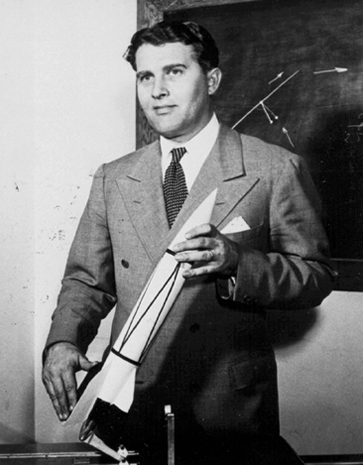
(from http://history.msfc.nasa.gov/vonbraun/photo/38.html)
Probably the most influential person in the development of rocketry in the 20th century was Wernher von Braun. He attended the Technical University in Berlin, received an engineering degree in 1932 and a Ph.D. in physics in 1934.
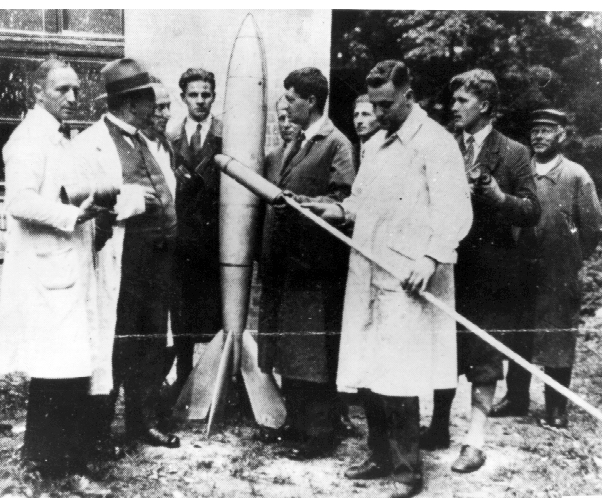
(from: http://history.msfc.nasa.gov/vonbraun/photo/50.html)
The 1930s saw a proliferation of amateur rocket societies. Such societies were formed in the Soviet Union, Britian, the U.S., and Germany. The German organization was named Verein fur Raumschiffarht (or the "Society of Space Travel").
Von Bruan became acive in the society and was heavily influenced by Hermann Oberth. The Nazi Germany government became interested in the work done by the society.
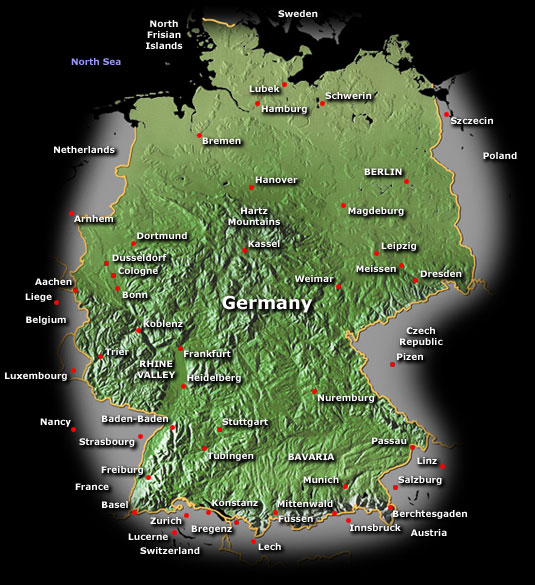
(from: http://www.bugbog.com/ maps/europe/germany_map.html)
A research center was set up on the Baltic coast of Germany near the town of Peenemunde where von Bruan worked for several years (in fact, Hermann Oberth worked there for a while as well).

(from: http://history.msfc.nasa.gov/vonbraun/photo/31.html)
The facts that slave labor was used in rocket construction at Peenemunde and that the facility was used to develop weapons used primarily against London followed von Braun for the rest of his life.

(from: http://www.nasm.si.edu/exhibitions/gal114/SpaceRace/sec200img/211l1il1.jpg)
The infamous V-2 rocket was the climax of research at Peenemunde. The V-2 was 46 feet tall and weighed 28,000 pounds when completely fueled. It ran on ethyl alcohol and liquid oxygen.
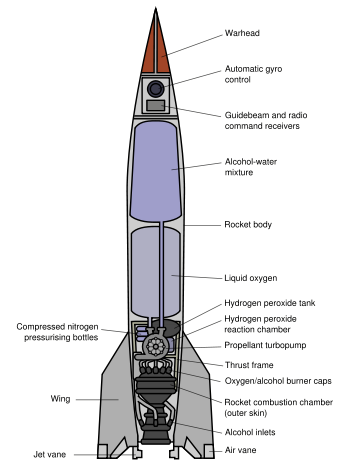
From Wikipedia.
It was guided by gyroscopes to its target and carried a one ton warhead. The engines burned for 68 seconds, giving the V-2 a range of 200 miles and a top speed of 3,600 miles per hour.
More than 3,000 V-2s were launched during World War II. Only 44% of them landed within 3 miles of their target. Though effective in terrorizing the populations of London and Antwerp, Belgium, the V-2 was an expensive and rather impractical weapon.
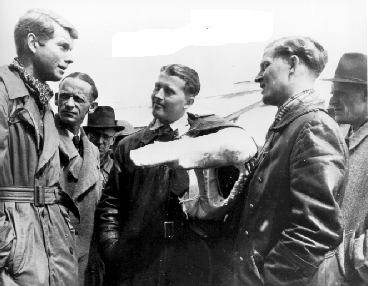
(from: http://history.msfc.nasa.gov/vonbraun/photo/surren.html)
As the second world war was winding down in Germany, the Peenemunde team travelled south to avoid capture by the Soviets. On May 2, 1945 the team surrendered to U.S. forces. The U.S. Army was able to obtain paperwork, spare parts, and a number of V-2 rockets. These personel and equipment were to become the foundation of the U.S. rocket program. The Soviet Union also captured some Peenemunde workers and hardware, but not nearly to the extent that the U.S. did.
Go to 1950s Popular Culture: Books and Magazines section.









